|
|
Updated as per The Known Sphingidae of Costa Rica, November 2007
Updated as per
AN ANNOTATED CHECKLIST OF THE SPHINGIDAE OF BOLIVIA, December 2009
Updated as per personal communication with Jose Ramon Alvarez Corral (Barinas, Venezuela) May 28, 2012; ongoing
Updated as per personal communication with Sergio D. Rios Diaz in CATOLOGO DE LOS SPHINGIDAE (INSECTA: LEPIDOPTERA) DEPOSITADOS EN
EL MUSEO NACIONAL DE HISTORIA NATURAL DEL PARAGUAY; sent to me in July 2014 by Sergio D. R�os D�az.
Updated as per personal communication with Ezequiel Bustos (Shilap revta. lepid. 43 (172) diciembre, 2015, 615-631 eISSN 2340-4078 ISSN 0300-5267), January 4, 2016
Updated as per personal communication with Wolfgang Walz (Pedro Leopoldo, Minas Gerais, Brazil); February 2022
Updated as per Hawk-moths (Lepidoptera: Sphingidae) of Trinidad, West Indies: an illustrated and annotated list; Matthew J.W. Cock; April 12, 2022
|
Nyceryx riscus
Schaus, 1890
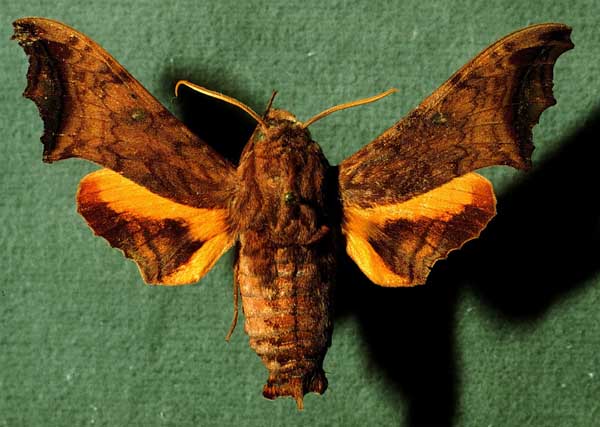
Nyceryx riscus male, Costa Rica, courtesy of Dan Janzen.
This site has been created by Bill Oehlke.
Comments, suggestions and/or additional information are welcomed by Bill.
TAXONOMY:
Family: Sphingidae, Latreille, 1802
Subfamily: Macroglossinae, Harris, 1839
Tribe: Dilophonotini, Burmeister, 1878
Genus: Nyceryx Boisduval, [1875] ...........
Species: riscus Schaus, 1890
|
DISTRIBUTION:
Nyceryx riscus (wingspan: 50-58mm; females larger than males) flies from
Belize and Mexico, the
specimen type locality,
to Costa Rica;
Venezuela: (Barinas (JRAC));
Trinidad;
Paraguay: Guaira; Central;
and further south to Bolivia: La Paz (1100m)
and (Argentina: Misiones (EB)).
It is also recorded in Brazil: Minas Gerais, Pedro Leopoldo (WW).
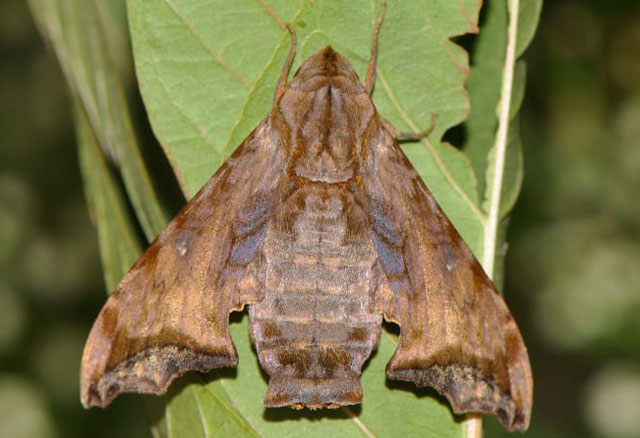
Nyceryx riscus, female, Pedro Leopoldo, Minas Gerais, Brazil,
courtesy of Wolfgang Walz, id by Jean Haxaire.
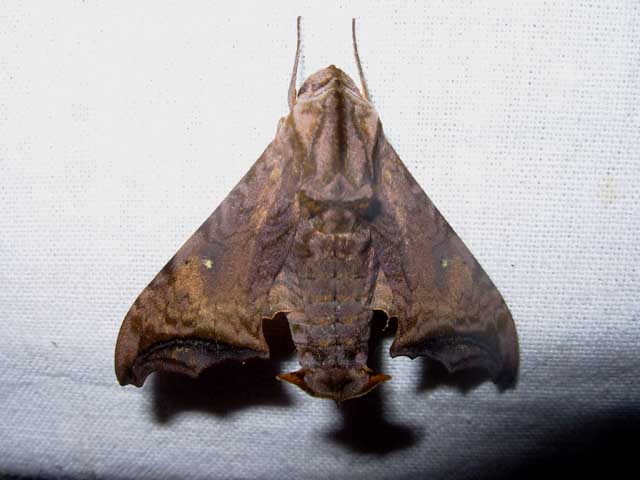
Nyceryx riscus, Yacutinga, Misiones, Argentina,
February 2008, courtesy/copyright
Ezequiel Bustos.
FLIGHT TIMES:
Moths are probably on the wing in just
about every month, but with no records for March, in Costa Rica.
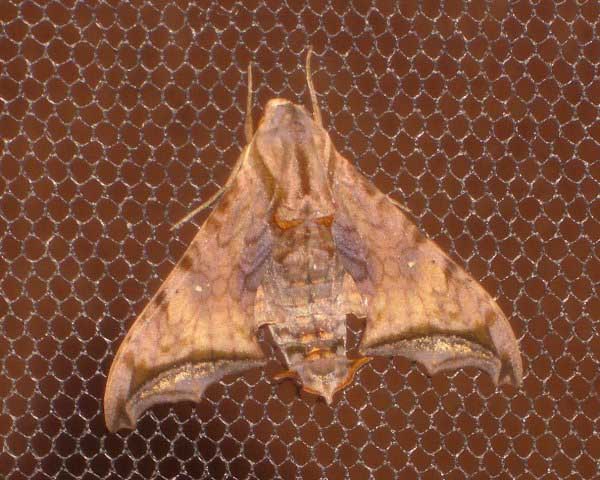
Nyceryx riscus, Grande Papagayo, north-west coast of the Tamarindo Peninsula, Costa Rica,
near Panama, September 17-20, 2008, courtesy of Tony James.
ECLOSION:
Adults eclose, usually within two to four weeks from pupation date.
SCENTING AND MATING:
Females call in the males with a pheromone released from a gland at the tip of the abdomen.
Females are active just after midnight with males beginning night flight around 1:00 am.
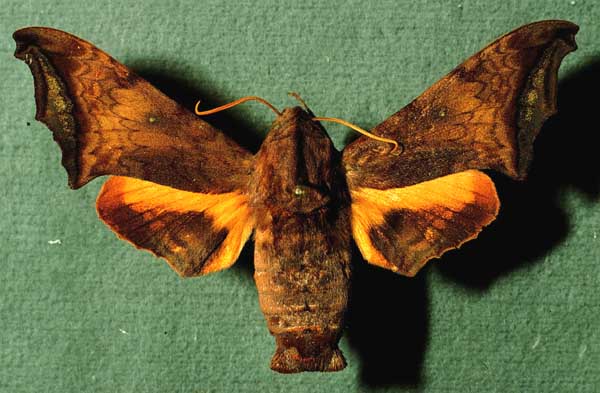
Nyceryx riscus female, Costa Rica, courtesy of Dan Janzen.
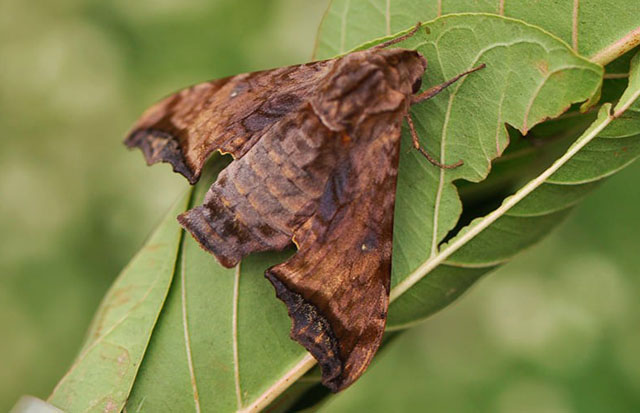
Nyceryx riscus, female, Pedro Leopoldo, Minas Gerais, Brazil,
courtesy of Wolfgang Walz, id by Jean Haxaire.
EGGS, LARVAE, PUPAE:
Larvae feed on Xylophragma seemannianum.
Wolfgang Walz reports them on Pingo-de-ouro (Duranta repens aurea), família Bignoniaceae, in Minas Gerais, Brazil.
I take the following quotes from Dan Janzen's notes:
"The tail horn is solid green with well-developed bumps. The body
is a yellowish/pale green; the lateral diagonal slashes are pale yellow. The head is pale green with a trace of blue wash, and the
base of last and second to last pair of legs is black with dark brown center and red/orange lateral margins to yellow around base, like a
Perigonia spp. caterpillar. These caterpilars save turds and make a pupation chamber in soil in a surface pit. The pupa has no tongue
case; note that the tail horn of Perigonia spp. is also slightly bumpy - extremely similar caterpillar to Perigonia spp."
"Larvae can be found eating very mature leaves. There is no dorsal green line and very faint yellow dotting (like Protambulyx strigilis)
and the side slashes are yellow-green and faint, but the tail slash is bright yellow green, not white and there are no accompanying lines;
front legs have a strong yellow lateral patch and then black and then red at very base; shows yellow quite strongly when exposes;
green tail horn; very active caterpillar (other one was also), and the most running sphingid larva I know; when eating sits below leaf
along midrib and eats off flat end of leaf; when touched, thrashes violently from side to side; when being photographed was on a
horizontal leaf, and produced one turd, 2 cm from its middle. After about one minute, got restless and wiped mandibles repeatedly on
midrib and then stretched searching; when found turd, picked it up in mandibles and turned and straightened and released (dumped); turd
rolled near and the caterpillar repeated this over and over;
clearly removing it from vicinity and clearly smelled its presence."
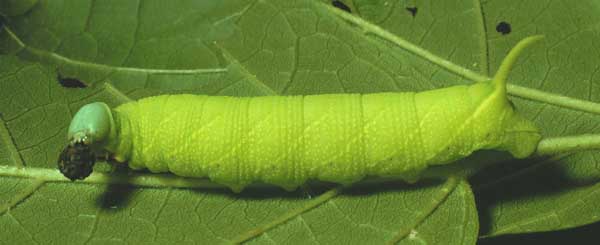
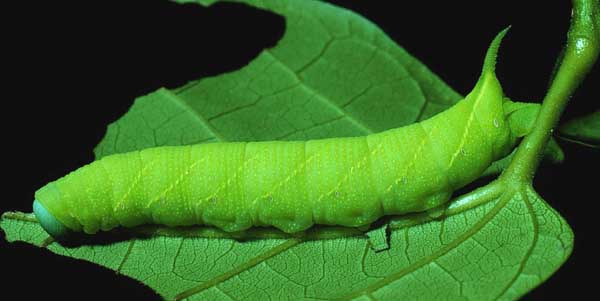
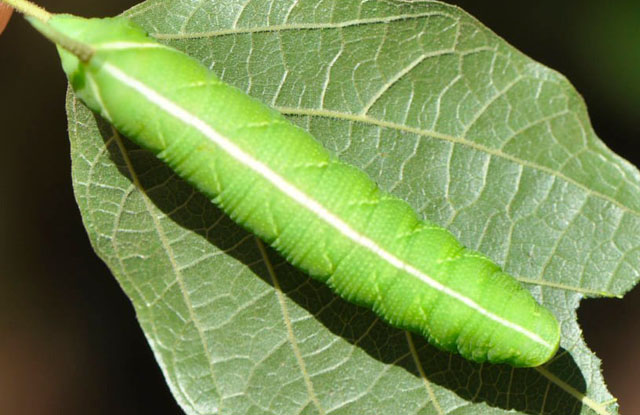
Nyceryx riscus, final instar, Pedro Leopoldo, Minas Gerais, Brazil,
courtesy of Wolfgang Walz, id by Jean Haxaire.
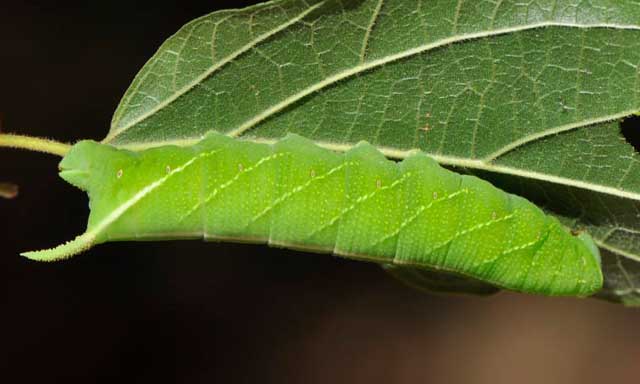
Nyceryx riscus, final instar, Pedro Leopoldo, Minas Gerais, Brazil,
courtesy of Wolfgang Walz, id by Jean Haxaire.
It is interesting that the Costa Rican larvae seem to lack the white dorsal line fseen on the Brazillian larva.
Return to Sphingidae Index
Return to Dilophonotini Tribe
Goto South American Index
Goto Central American Index









